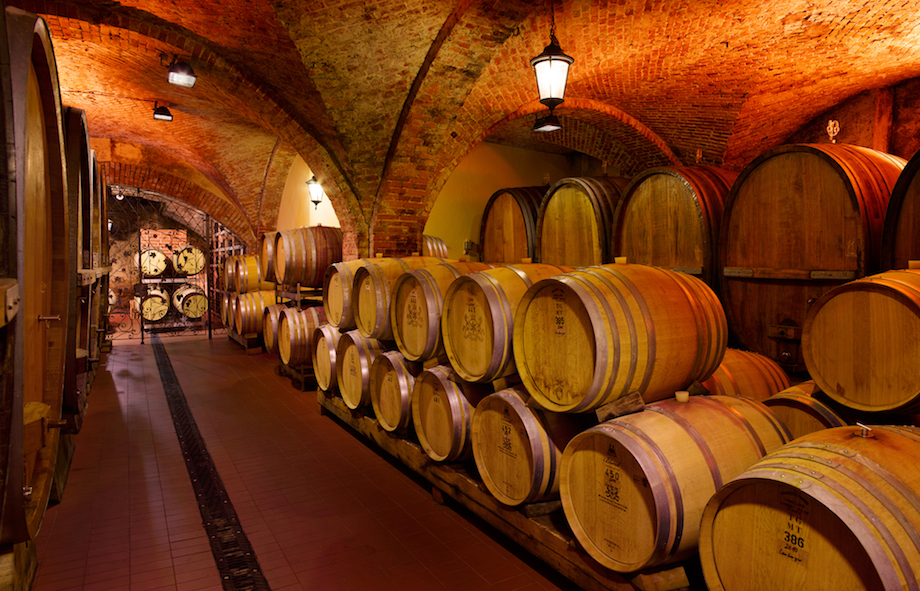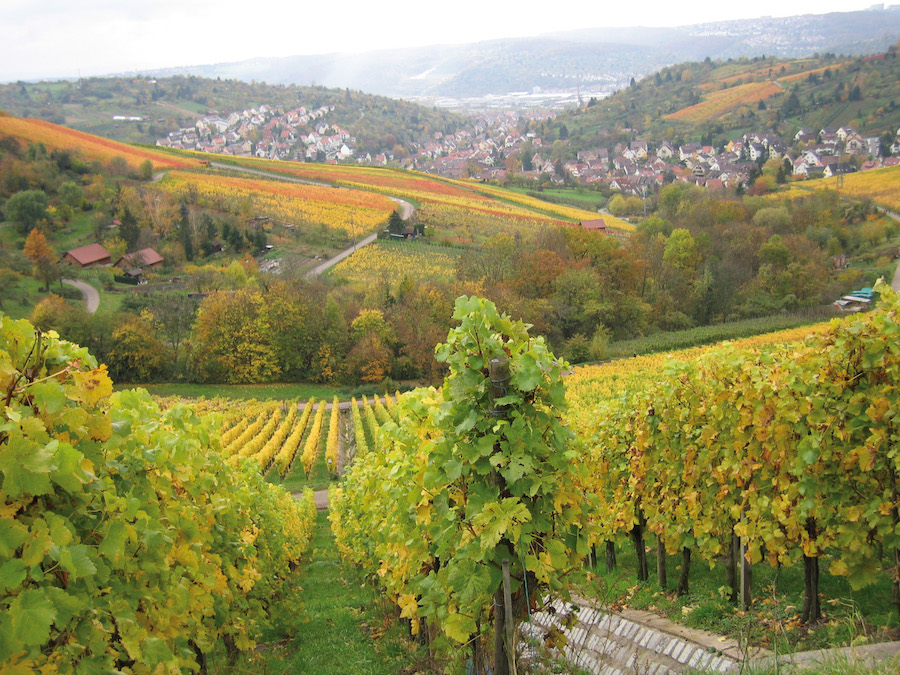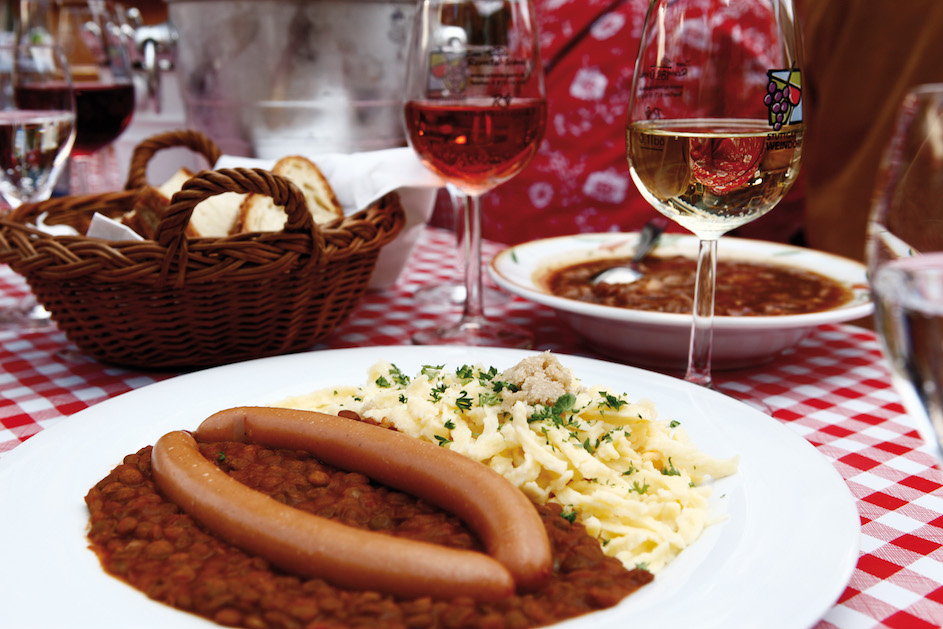The Art of Winemaking in Germany
Some vineyards in Stuttgart are located within the city center. Image courtesy of the Germany National Tourist Board.
Super DIY Winemaking in Stuttgart, Germany
People don’t usually equate great wines with Germany, but they should. Winemakers here utilize the same soil and sun as France, but they have one major advantage on their side of the border: German engineering.
It just so happens to be harvest season in Stuttgart, Germany, so I spend the day collecting grapes with local vintner Michael Warth, whose vast experience in winemaking spans several countries, including New Zealand, South Africa and the U.S.
Warth now runs the family business in Stuttgart. Remarkably, his family has been making wines in Germany for more than 800 years.
You heard that right—800 years. This is a guy who bleeds wine.
The previous night, Warth and just one other employee worked late into the night pressing grapes, and he’s back at it again this morning, working the harvest with both of his parents.
“That’s different to America,” says Warth, vintner and board member of Weinmanufaktur Untertürkheim. “We try to work in all areas, including the vineyards, the cellar and the selling. It’s the only way to see what you can sell, how to produce, what you need in the cellar. It’s end to end.”
Warth only has 10 employees, which means that the majority of people participating in the harvest are co-op members.
“The [co-op members harvest] in their free time, and it’s a tradition that they get wine in exchange for the picking the grapes. So they drink all year long for free,” he says. “All of them say, ‘each evening, when I open a bottle, I always think about the hard work I’ve done.’”
A low overhead also helps the company to keep costs down. Warth tells me that overall, wines in Germany are incredibly affordable. Most of his wines retail for around $10 a bottle—and they are really good.
“I like the white wines,” says Warth. “For me, Germany is the perfect place to produce white wines, and I think we produce Rieslings better than everywhere else in the world.”
Vineyards are positioned on hillsides to allow an even distribution of rain. Image courtesy of Weinmanufaktur Untertürkheim.
Stuttgart’s climate of cold nights and sunny days is ideal for the Riesling grape because it creates a longer period of ripening—approximately 100 days. Harvesting the grape at just the right time not only allows apple and tree fruit notes to develop but also ensures that the winemaker is getting the right balance of acidity.
Notice, too, the lack of irrigation systems. In Germany, vineyards are positioned on hillsides to allow an even distribution of rain. Natural rainfall is thought to be the only way for the vines to retain its terroir characteristics.
Without question, winemaking in Germany is authentic and very DIY. This is the kind of craftsmanship that we just don’t see enough of in this day and age.
“We produce wines with our heart. So we don’t care if you earn one euro more or less—it’s the tradition, the heart and the family,” says Warth. “In America, and I think all overseas, it’s just a production, just a company and just the earning of money. They are interested in the interest. We are very interested in the quality.”
My trip to Stuttgart was made possible by the Germany National Tourism Board and Weinmanufaktur Untertürkheim. Views expressed are my own.






